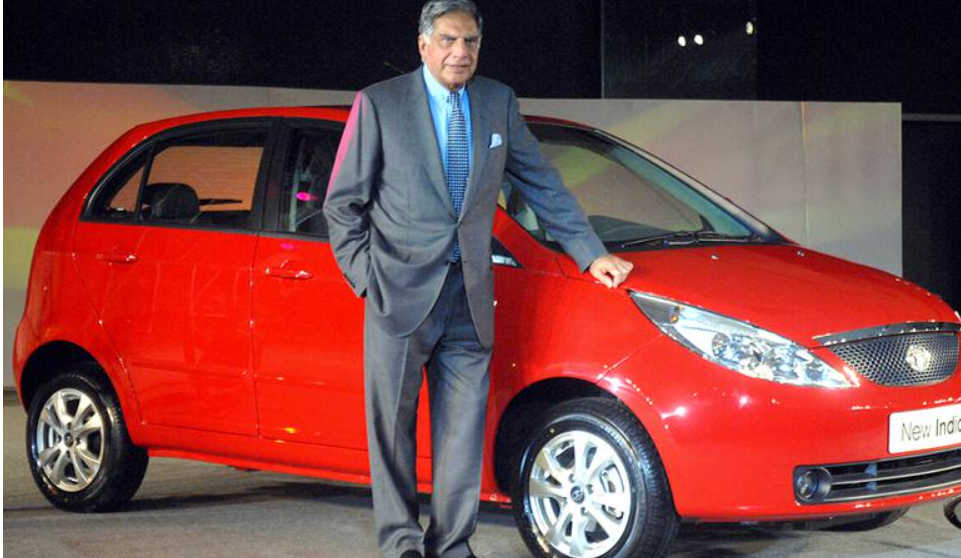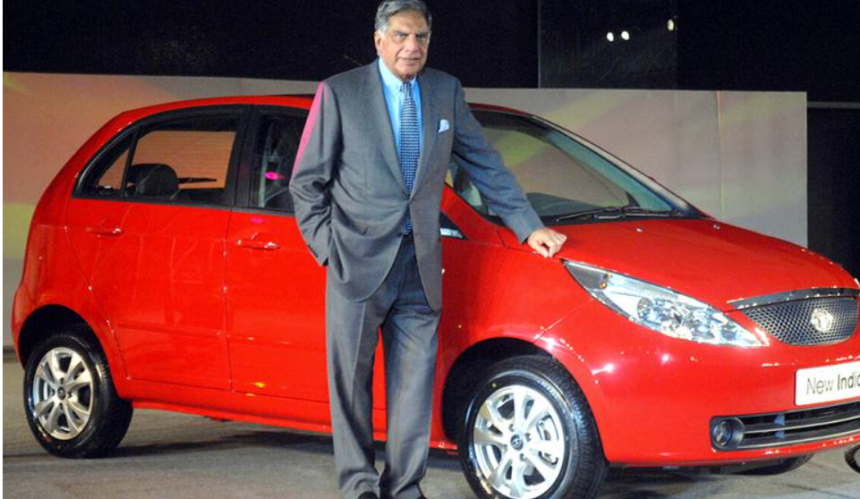1. Introduction
Ratan Tata, one of India’s most visionary business leaders, is best known for his bold ambitions and contributions to the automobile industry. While the Nano became a household name for its attempt to revolutionize affordable transportation, his earlier success with the Tata Indica laid the foundation for Tata Motors’ prominence in the global automotive sector. The Indica, a brainchild of Ratan Tata, was a strategic move that defined Tata’s path in the competitive world of passenger cars.
2. The Genesis of Tata Indica
In the mid-1990s, Tata Motors, then Telco, was mainly known for its commercial vehicles, including trucks and buses. Ratan Tata recognized the potential for Tata to expand its horizon into the passenger car segment. Indian car buyers were looking for affordable, reliable, and spacious cars, and Tata wanted to meet this demand head-on. Thus, the idea of the Tata Indica was born, a car designed to have the size and spaciousness of an Ambassador and the affordability of a Maruti 800.
3. Ratan Tata’s Vision: The People’s Car
Ratan Tata’s goal with the Indica was to create a “people’s car” that was not only made in India but also designed to suit Indian needs. The car was aimed at a growing middle-class segment that aspired to own a vehicle but found their choices limited to the few cars available in the market at the time.
The idea was to deliver a car with the following features:
Size: Large enough to seat a family comfortably, comparable to the iconic Ambassador.
Price: Affordable for the average Indian household, competing with the popular Maruti 800.
Fuel Efficiency: Crucial for Indian conditions, where fuel prices were a significant concern.
Design: Stylish yet practical, setting the car apart from the boxy designs of the era.
4. Overcoming Challenges
Building the Indica from scratch was no easy task. Tata Motors had no experience in making passenger cars, and the challenges were immense. The company had to develop expertise in designing and engineering a car, set up production lines, and develop a network of dealers and service centers. Additionally, Ratan Tata faced skepticism both internally and externally. Many questioned whether Tata Motors could succeed in the highly competitive car market, especially against established players like Maruti Suzuki. 
Despite the odds, Ratan Tata remained steadfast in his vision. He brought together a team of talented engineers and designers who worked day and night to make the Indica a reality. Their efforts paid off, and in 1998, the Tata Indica was officially launched at the Geneva Motor Show.
5. The Launch and Initial Reception
The launch of the Indica created a buzz in the Indian automobile industry. It was the first fully indigenous car designed, developed, and manufactured in India, a matter of great pride for the nation. The car’s tagline, “More car per car,” emphasized its spaciousness and value for money, appealing directly to Indian consumers.
However, the initial reception of the car was mixed. While many buyers were excited about the idea of an Indian-made car, early models faced issues with quality control and performance. There were reports of poor handling, engine problems, and overall dissatisfaction. This could have been a setback for any other company, but not for Tata Motors.
6. Ratan Tata’s Unyielding Resolve
One of Ratan Tata’s most admirable traits as a leader was his perseverance. Rather than give up on the Indica, he took the feedback seriously and worked to improve the car. The company quickly made modifications to address the issues, and subsequent versions of the Indica were much better received. 
Ratan Tata’s ability to learn from setbacks and make improvements highlighted his leadership style. He was never one to shy away from criticism or abandon a project halfway. Instead, he approached challenges with humility and determination, qualities that endeared him to his employees and the larger business community.
7. Indica’s Success and Legacy
By the early 2000s, the Tata Indica had turned around its fortunes. Improved versions of the car gained popularity, and it became one of the best-selling models in India. The Indica was praised for its spacious interior, robust design, and fuel efficiency. It found a significant customer base among taxi operators, private owners, and even government organizations.
The success of the Indica marked a turning point for Tata Motors. It established the company as a serious player in the passenger car market and laid the foundation for future successes, including the development of other models like the Indigo, Nano, and later the Nexon and Harrier.
8. The Humility and Empathy of Ratan Tata
While Ratan Tata was known for his big ideas and business acumen, what set him apart as a leader was his humility and empathy. Despite being one of the most powerful figures in India, Ratan Tata was known for his down-to-earth demeanor. He would often take time out of his busy schedule to interact with employees at all levels, from factory workers to senior management.
He also had a deep love for animals, particularly street dogs. Stories of Ratan Tata stopping to pet a stray dog on the street are well-known, and he is often seen feeding and caring for animals wherever he goes. This kindness extended to his employees as well. He was known for his compassionate approach, ensuring that Tata Motors was not just a place of work, but a family for its staff.
9. Lessons in Leadership: Ratan Tata’s Legacy
Ratan Tata’s journey with the Tata Indica offers several lessons in leadership:
Vision: Ratan Tata had a clear vision for the future of Tata Motors. He saw the potential of the Indian car market and boldly pursued it.
Resilience: When faced with challenges, Ratan Tata did not back down. He embraced setbacks as opportunities to learn and improve.
Empathy: As a leader, Ratan Tata cared deeply for his employees and the community. His empathy made him not just respected but also loved by those who worked for him.
Humility: Despite his success, Ratan Tata remained humble, always grounded and approachable.
10. Conclusion: The Indica’s Place in Indian Automotive History
Much before the Nano captured global attention, Ratan Tata had already made history with the Indica. The car was a symbol of India’s engineering potential and the ambitions of an industrialist who dared to dream big. Ratan Tata’s leadership during this period set the tone for Tata Motors’ future successes and cemented his place as one of the most influential figures in the Indian automotive industry.
Today, while the Indica may no longer be in production, its legacy lives on. It represents a significant chapter in India’s automotive history, a testament to Ratan Tata’s visionary leadership, and a reminder that with perseverance and passion, even the boldest dreams can become reality. ALSO READ:-Allround South Africa Sends Scotland Out of the Tournament 2024





